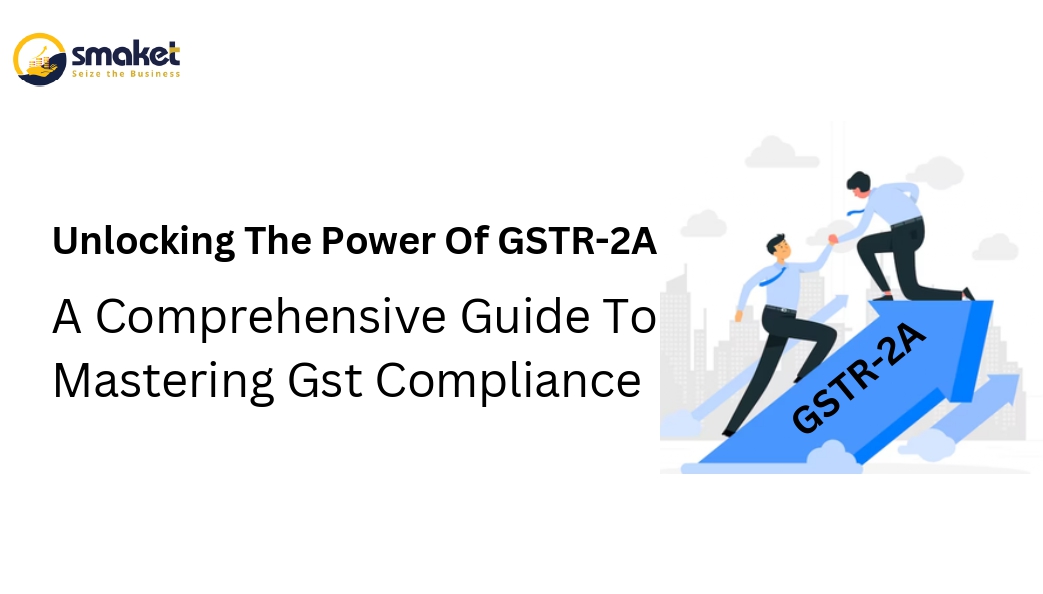If you are a commercial enterprise owner in India handling Goods and Services Tax (GST), understanding various GST returns is vital. One such go back is GSTR-2A, a crucial file that performs a considerable position in GST compliance. In this blog, we’re going to dive deep into GSTR-2A, explaining its motive, significance, and how to manipulate it correctly.
What is GSTR-2A?
GSTR-2A is an automobile-generated return statement underneath the GST regime. It is generated robotically by the GST Network (GSTN) based on data filed by way of providers in their GSTR-1 returns. Essentially, it acts as a recipient’s buy sign up, reflecting all the inward elements made to the taxpayer.
Importance of GSTR-2A:
GSTR-2A performs a pivotal role within the GST system as it serves as the premise for the GSTR-3B go back, which organizations report to calculate their final tax liability. It enables groups validate their purchases with the facts furnished via their providers and guarantees proper tax credit claims.
Understanding GSTR-2A Components:
The GSTR-2A file comprises numerous additives along with invoice-wise information of purchases, amendments made by using providers, and info of Input Tax Credit (ITC) available. Familiarizing yourself with these additives is critical to ensure correct reconciliation and compliance.
Managing GSTR-2A Effectively:
To control GSTR-2A efficaciously, observe these steps:
Regular Reconciliation:
Regularly reconcile the statistics in GSTR-2A with your buy facts to perceive discrepancies, if any. Timely Communication: Communicate along with your providers in case of any mismatches or missing invoices to rectify errors directly.
GSTR-2A vs. GSTR-2B:
Understand the difference between GSTR-2A and GSTR-2B, some other auto-drafted report, to streamline your tax credit score reconciliation method.
Automation Tools:
Consider using automation gear and software program that can help simplify the method of GSTR-2A reconciliation.
Compliance and Penalties:
Complying with GSTR-2A recommendations is important to keep away from consequences and interest on any discrepancies observed all through audits. Staying proactive on your approach closer to GSTR-2A can keep your business from unnecessary financial burdens.
Conclusion:
Mastering GSTR-2A is essential for organizations to make certain seamless GST compliance. By knowledge its importance, additives, and coping with it efficiently, you can streamline your accounting methods and make the most of to be had tax credit. Remember to invest time in gaining knowledge of and comparing notable solutions to make knowledgeable decisions for your enterprise’s financial achievement. Stay informed, compliant, and revel in the advantages of streamlined inventory control and advanced economic control under the GST regime.
FAQ:
1. Can I regulate the GSTR-2A file generated through the GSTN?
No, GSTR-2A is an automobile-generated file based totally on information filed through providers in their GSTR-1 returns. It cannot be changed with the aid of recipients.
2. Are all purchases eligible for Input Tax Credit (ITC) as in step with GSTR-2A?
No, not all purchases can be eligible for ITC. Some purchases, like those for non-public use or the ones not associated with enterprise sports, may not qualify for ITC.
3. What have to I do if a provider does not encompass an invoice in their GSTR-1, and it’s far lacking from my GSTR-2A?
If an invoice is lacking to your GSTR-2A because of the dealer’s non-compliance, you have to touch the supplier and request them to rectify the omission and document the necessary GSTR-1 change.
4. Can I claim ITC on purchases that don’t seem in my GSTR-2A?
As consistent with GST regulations, you could declare ITC most effective on purchases that seem to your GSTR-2A. If a buy is lacking, you won’t be able to declare ITC on it.
5. Is there a deadline for reconciling GSTR-2A with my purchase facts?
While the blog emphasizes everyday reconciliation, it doesn’t mention a particular deadline. It’s essential to carry out this reconciliation before submitting your GSTR-3B return, generally through the twentieth of the following month.

